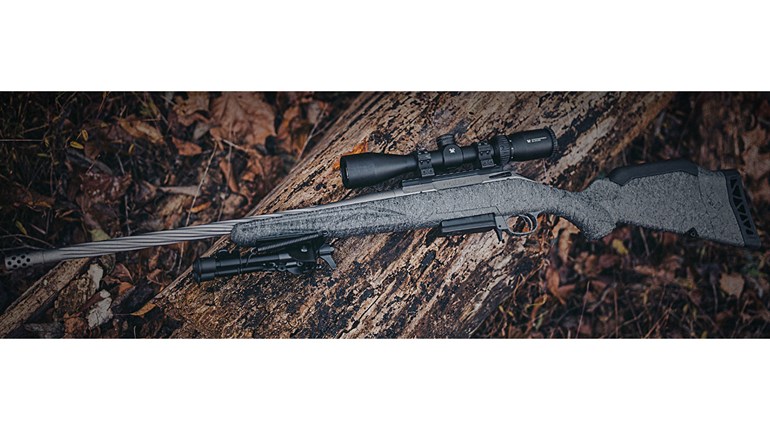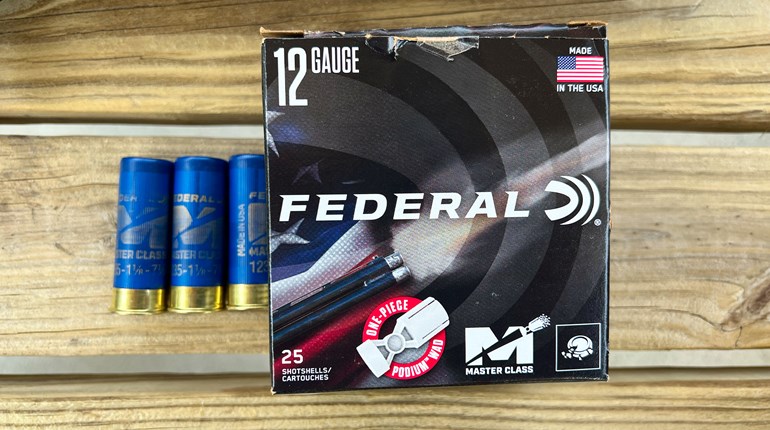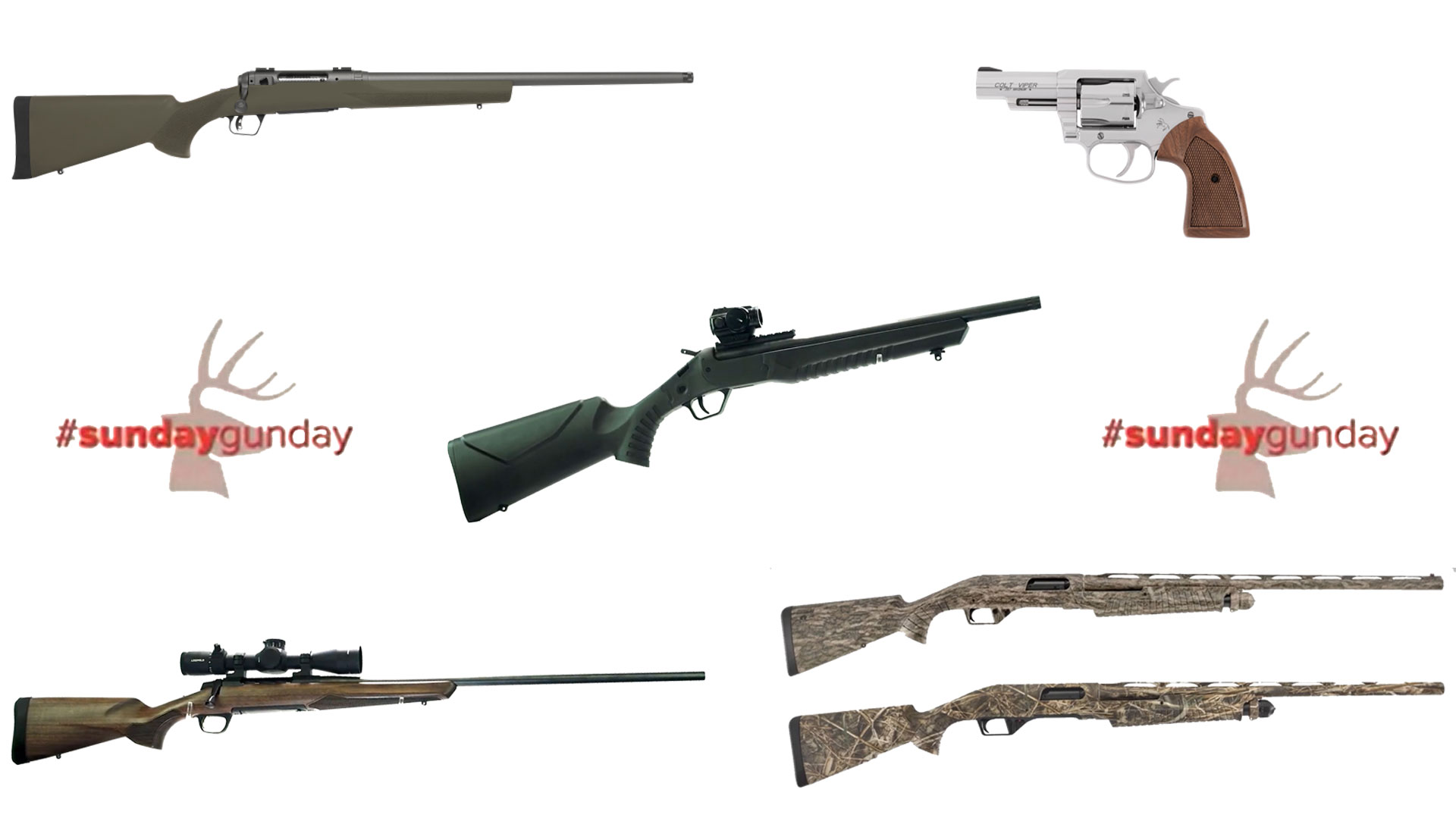
When it comes to the workhorse bore diameters for all-around hunting choices, it’s no big surprise that the 7mm and .30 calibers reign supreme. They offer a mix of bullet weight, striking power and user-friendliness which is hard to approach with any other caliber. Many love the .277-inch bore diameter, as the .270 Winchester earned a huge following over the last century—it turns 100 in 2025—but with bullet weights topping out at 150 grains, it doesn’t deliver the goods the way a 7mm or .30 will. I always wondered why the 6.5mm cartridges (.264-inch diameter) of the late 19th century could hurl 160-grain bullets, while the .277-inch-bore had a max weight of 150 grains, maybe 160 grains if the bullet was short and squat. Jump to 7mm (.284-inch diameter) and you had the option of climbing to 175 grains. What I didn’t understand at the time was the twist rate of the .270 Winchester, .270 Weatherby and even the .270 WSM was the root of the problem; the 1:10-inch twist rate just could stabilize bullets heavier than 150 or 160 grains.

Things are changing in the cartridge world, with bullets getting longer, with higher ballistic coefficients. In order to drive these longer bullets, a faster twist rate has been employed, and this has been a game changer for two new cartridges in the .277-inch bore diameter. Both the 27 Nosler and 6.8 Western use the .277-inch-diameter bullets made so popular by the venerable .270 Winchester, yet at faster twist rates, and with heavier projectiles than the old man can handle. Let’s pit these two against one another, and see which of the young upstarts comes out on top.

The 27 Nosler came first, by a year, being released in 2020. Like the 26, 28, 30 and 33 Nosler cartridges which came before, the 27 Nosler is based on the classic .404 Jeffery case, with the rim slightly reduced in diameter to match the popular 0.534-inch-diameter case head of the Holland & Holland design. Nosler has strived to deliver fast, magnum-level cartridges which use a rimless, non-belted design. The 27 Nosler fits perfectly in a long action rifle, having a cartridge overall length of 3.340 inches—the same as the .30-06 Springfield and the .300 Winchester Magnum.

Using a 35-degree shoulder for headspacing, the 27 Nosler has a healthy case capacity, driving a 165-grain Nosler AccuBond Long Range to 3158 fps. Using a 1:8.5-inch twist rate, the 27 Nosler can undoubtedly exceed the potential of any older .270-caliber cartridge, as no earlier cartridge will stabilize this bullet, let alone push it to that level of speed. The 150-grain grain AccuBond load leaves the muzzle at 3300 fps—the .270 Winchester drives the same bullet to 2850 fps—so it’s pretty clear that the 27 inches Nosler picks up where the earlier .277-inch-diameter cartridges leave off. With a neck length of .328 inches—longer than the desired one-caliber—there is plenty of neck tension. I’ve found the 27 Nosler to be wonderfully accurate, having spent considerable time with it at the range, as well as using it to hunt several axis deer in Hawaii at ranges out to 250 yards. Note: it worked perfectly.

The 6.8 Western came out a year later, being a joint effort between Winchester and Browning ammunition. Based on the .270 Winchester Short Magnum, with the case shortened to allow for longer bullets to sit outside the case, the 6.8 Western uses a 1:8- or 1:7.5-inch twist to properly stabilize bullets weighing up to 175 grains. The 6.8 Western also uses a 35-degree shoulder for headspacing, with a case length of 2.02 inches, and a cartridge overall length of 2.955 inches. This allows the cartridge to be comfortably nestled in a short action receiver. Offering a neck length of exactly one caliber (.277 inches), the 6.8 Western is optimized to balance case capacity and the ability to use bullets considerably higher than normal. Factory loads include the 162-grain lead-free Copper Impact, the 165-grain Nosler AccuBond Long Range, the 170-grain hollowpoint boat tail Match, the 170-grain Ballistic Silvertip and 170-grain Powder Point (all from Winchester) and the 175-grain Sierra Tipped GameKing bullet in the Browning Line. The 162-grain leaves the muzzle at 2875 fps, the 165-grain load at 2970 fps, the 170-grain loads are cruising at 2910 to 2920 fps, and the 175-grain Browning load is moving at 2835 fps.

Comparing and contrasting the performance of the two cartridges, it will become quite apparent that the 27 Nosler runs hotter than does the 6.8 Western, by about 200 fps, but this comes at the cost of a longer receiver and slightly heavier rifle. Using a 200-yard zero, and the same 165-grain Nosler AccuBond Long Range bullet for comparison purposes, you’ll see the two cartridges striking within 0.8 inches of one another at 300 yards, with the 6.8 Western Coming in at 6.3 inches low and the 27 Nosler at 5.5 inches low. Take it to 400 yards, and the 6.8 Western hits 18.1 inches low, and the .27 Nosler 15.7 inches low; if you feel confident at 500 yards, the 6.8 Western needs 36 inches of trajectory compensation, while the 27 Nosler need 31.4 inches. So despite the velocity difference, the trajectory isn’t really all that much different; less than one MOA at 500 yards. In the energy department, the 27 Nosler betters the 6.8 Western my 400 ft.-lbs. or so at the muzzle, and at the 500 yard mark, you'll see the 27 Nosler retaining 2,123 ft.-lbs. of energy compared to the 6.8 Western’s 1,856 ft.-lbs.

On the shoulder, I’ve found that while both are tolerable, the 6.8 Western is less punishing than is the 27 Nosler. I also appreciate the fact that the 6.8 offers the advantage of offering the 175-grain bullets, where the 27 Nosler tops out at 165 grains. Looking at factory ammunition, you’ll see that the 27 Nosler will cost twice that of the 6.8 Western, and that can pose an issue to any hunter looking to put in the time necessary to become proficient with a long range cartridge.

I’ve found that both cartridges are impressively accurate, so there’s no real advantage either way in that department, but I like the fact that I can get magnum performance from the 6.8 Western in a short-action rifle, and despite the lesser velocity and energy, I've found the 6.8 Western more than enough gun for elk, deer and similar sized game. The 6.8 Western handles the lighter .277-inch-diameter bullets very well, giving added flexibility to the shorter cartridge.
Having spent time with both cartridges, both at the range and in real-world field situations, I’ll say that the differences between the two are small, and if you chose either, you’d have a definite advantage over the traditional .270 Winchester in bullet weight. I firmly believe that the 6.8 Western is everything the .270 WSM should’ve been, and while the 27 Nosler is solid, it doesn’t have the appeal that the 28 Nosler does, let alone the fact that Nosler is the only source of ammunition. So in this comparison, I will give the nod to the 6.8 Western; I have actually fallen head over heels for this cartridge for a number of reasons. Almost all the factory stuff in my Browning X-Bolt rifle has printed between ¾- and 1-MOA, with one factory load running at ½-MOA. Several handloads have equaled that performance, including the 140-grain Badlands Precision 140-grain Super Bulldozer 2 monometal bullet.

I sincerely hope these two cartridges take root, as they both bring the .277-inch bore diameter into the all-around class of cartridges, offering hunters yet another viable option. I do feel that the 6.8 Western has the goods to become the finest of the WSM family, despite the lack of those initials in its surname. It feeds reliably, unlike some siblings, and really brings a new dimension to the performance level of a short-action cartridge of this bore diameter. Perhaps I can put it best like this: after hunting with both of these cartridges, and fully evaluating their performances at the bench and in the field, I bought the 6.8 Western, and hunt with it regularly.
Looking for previous installments of our "Head to Head" series? Click here.



































